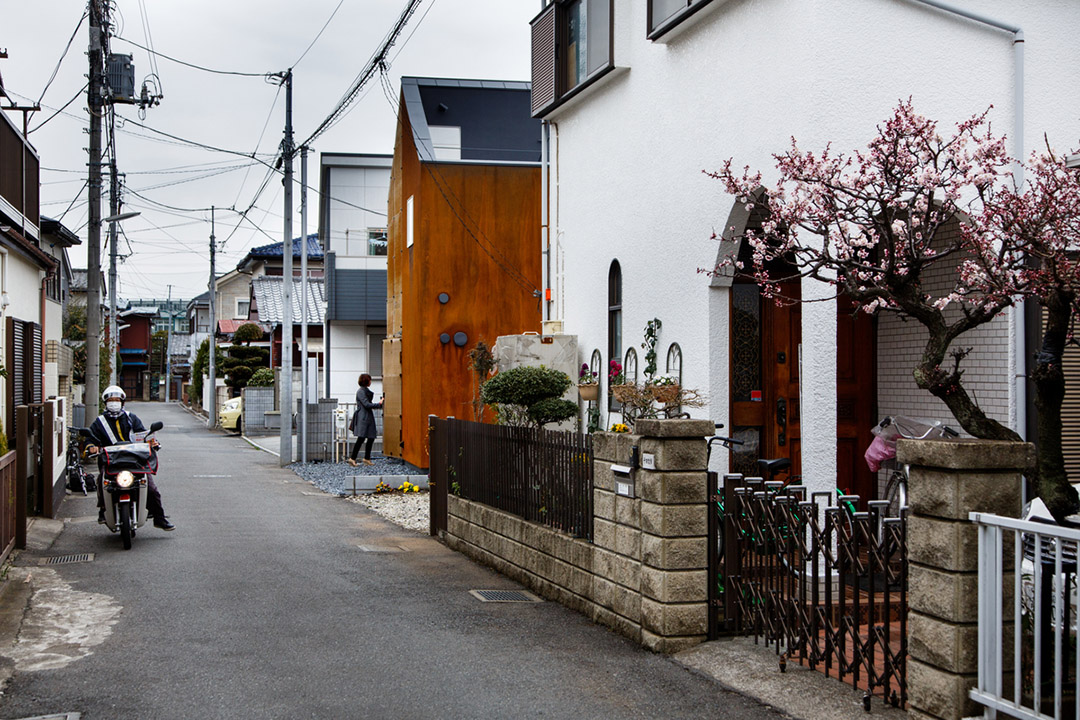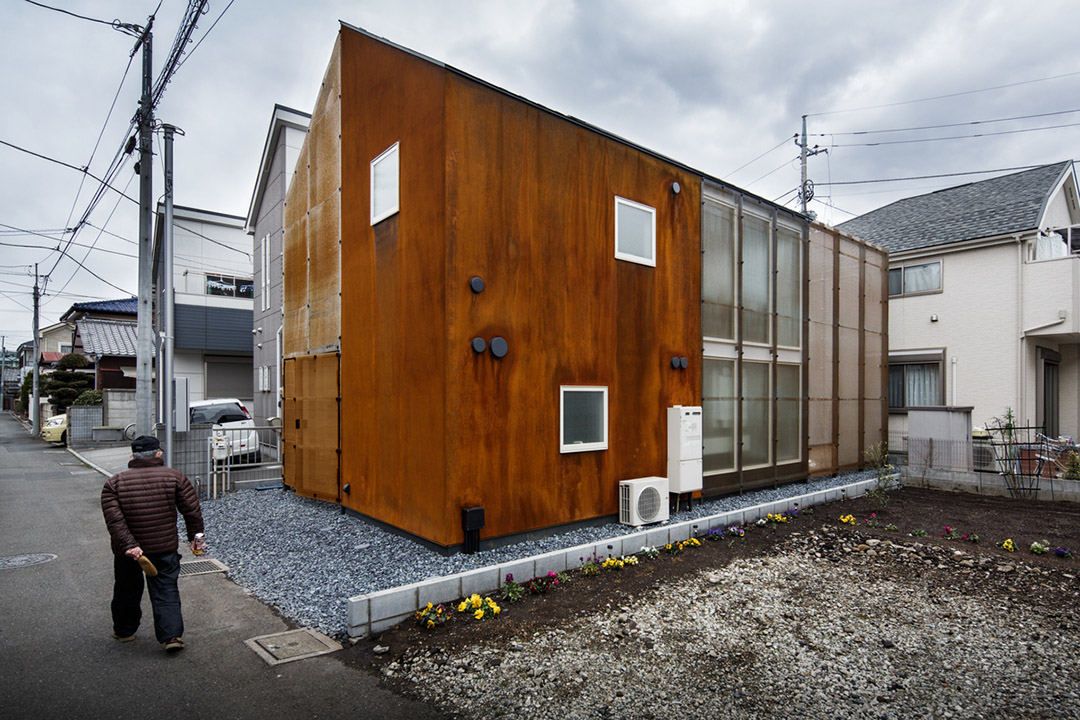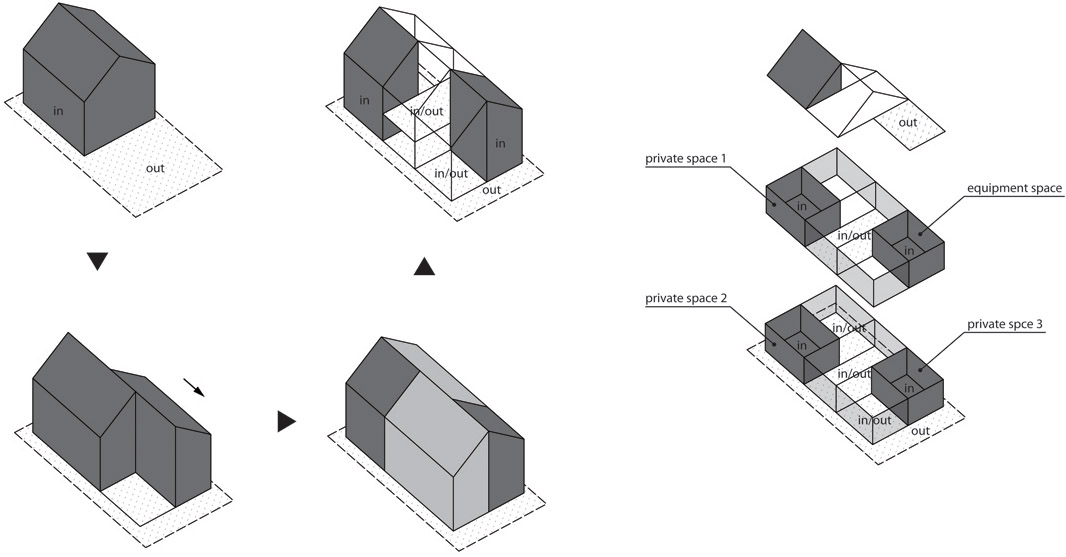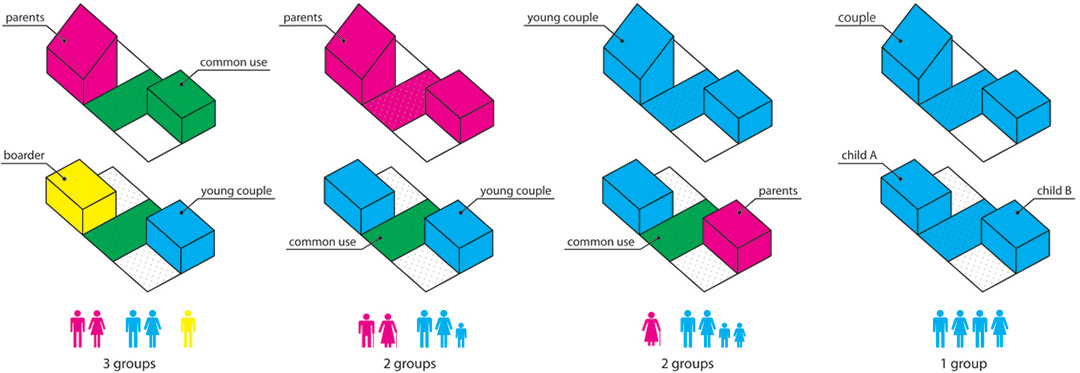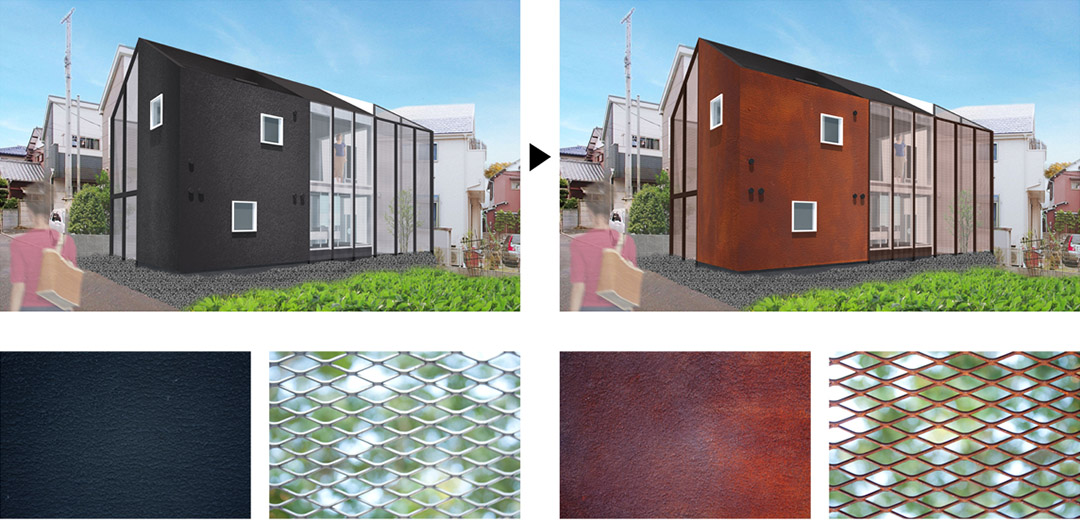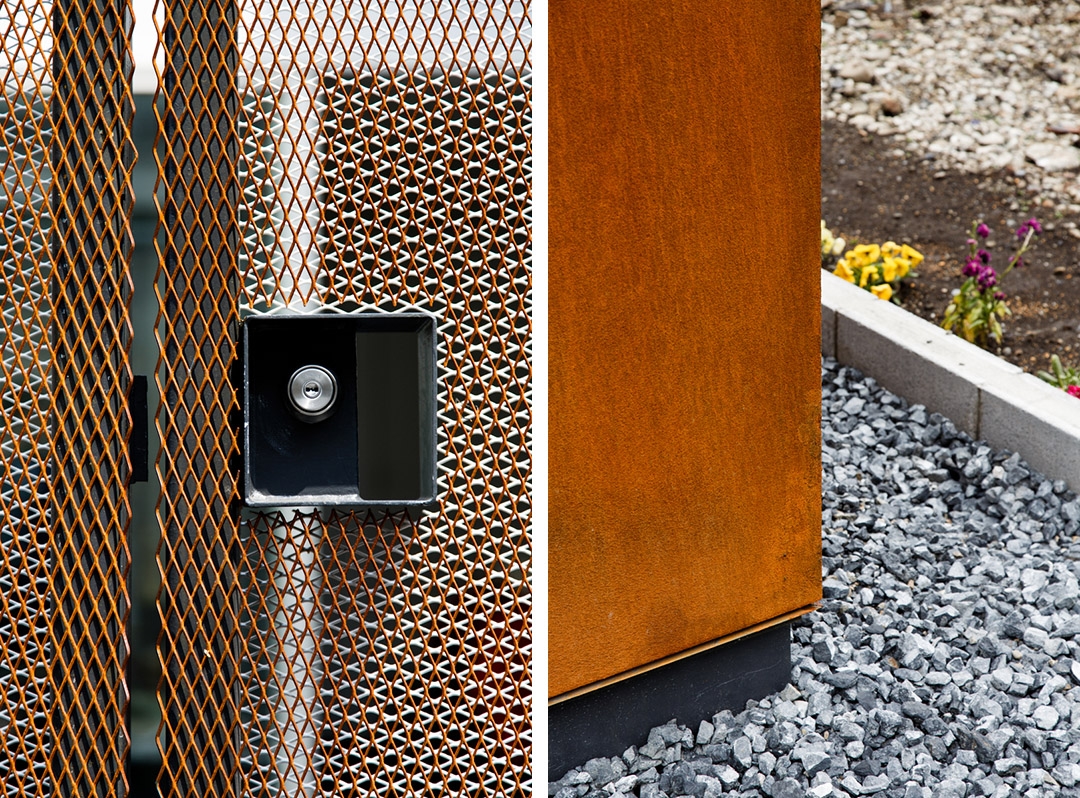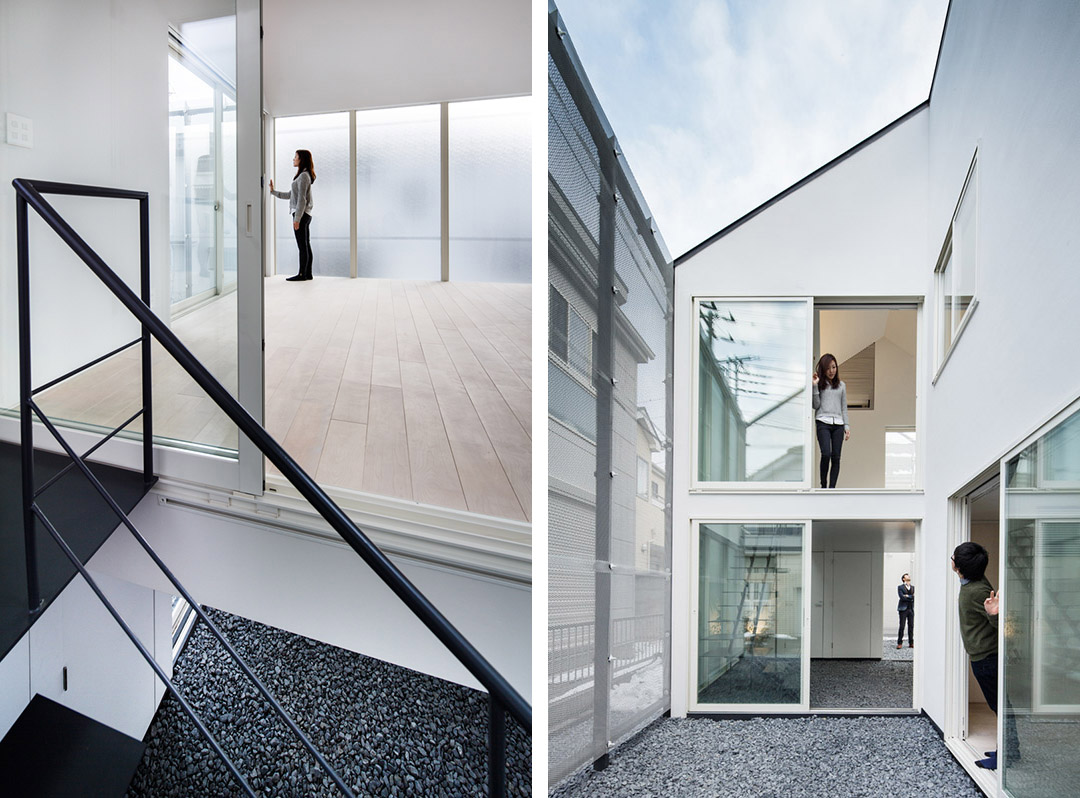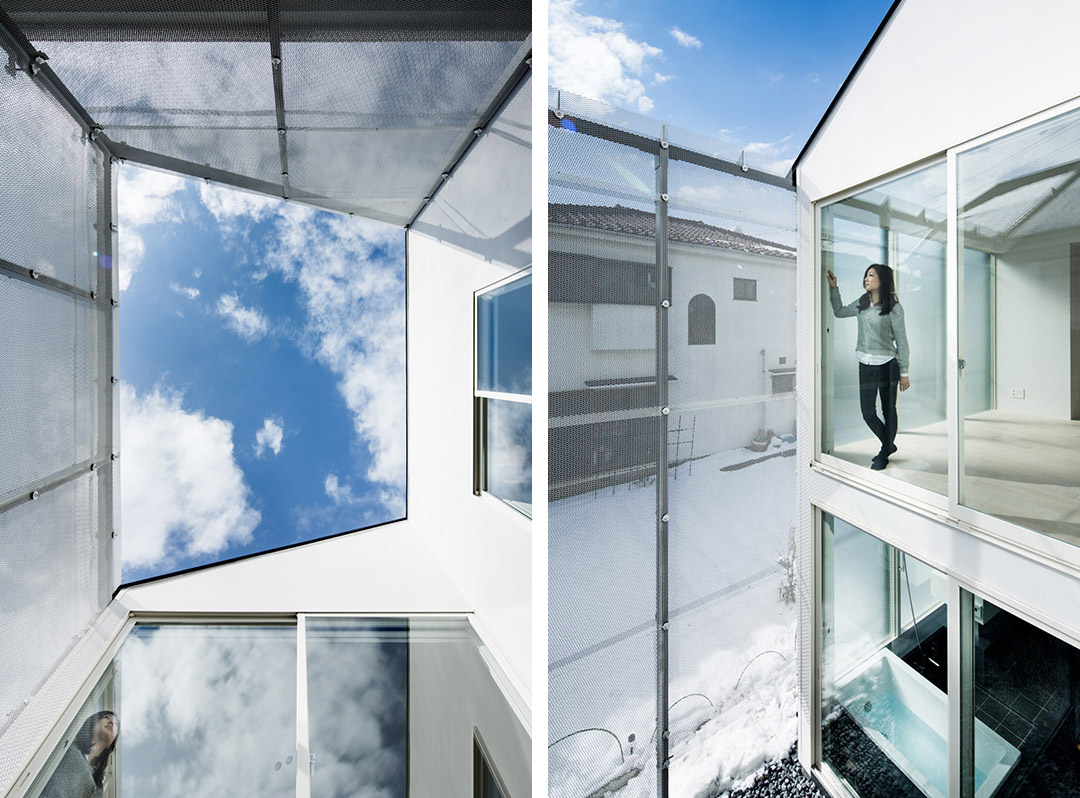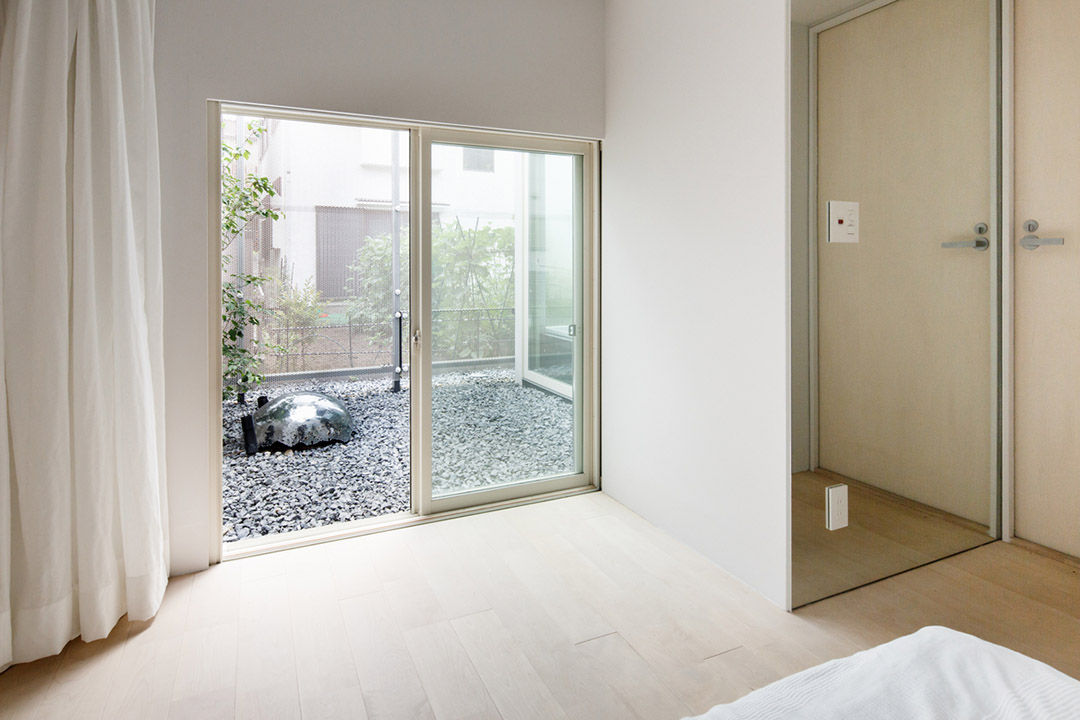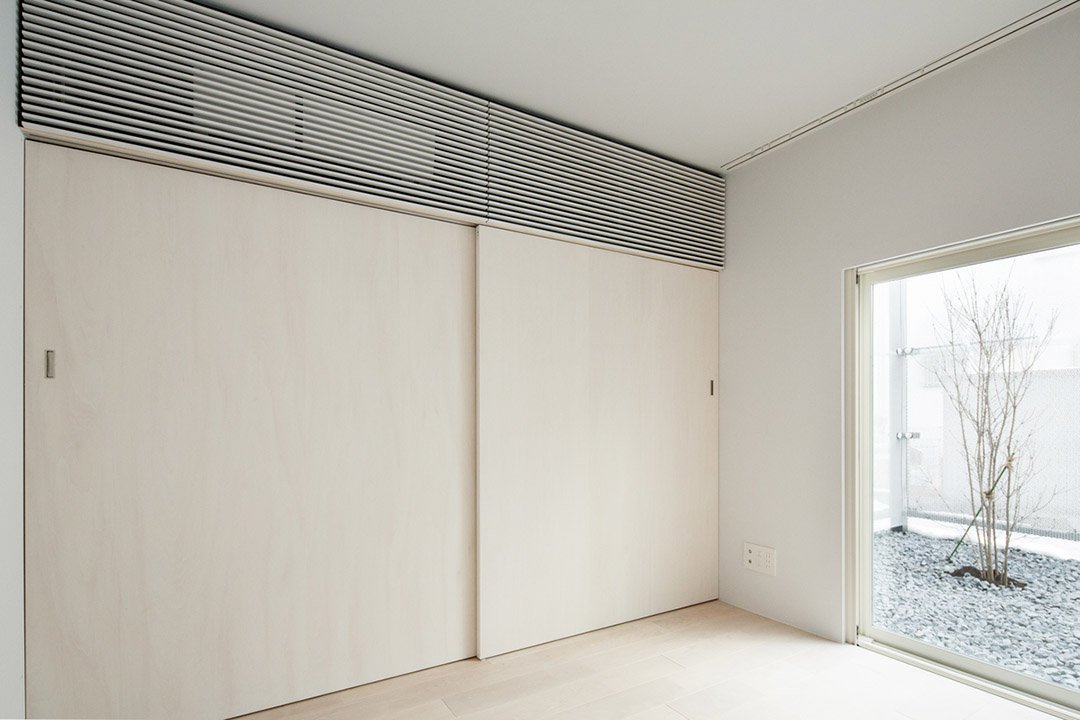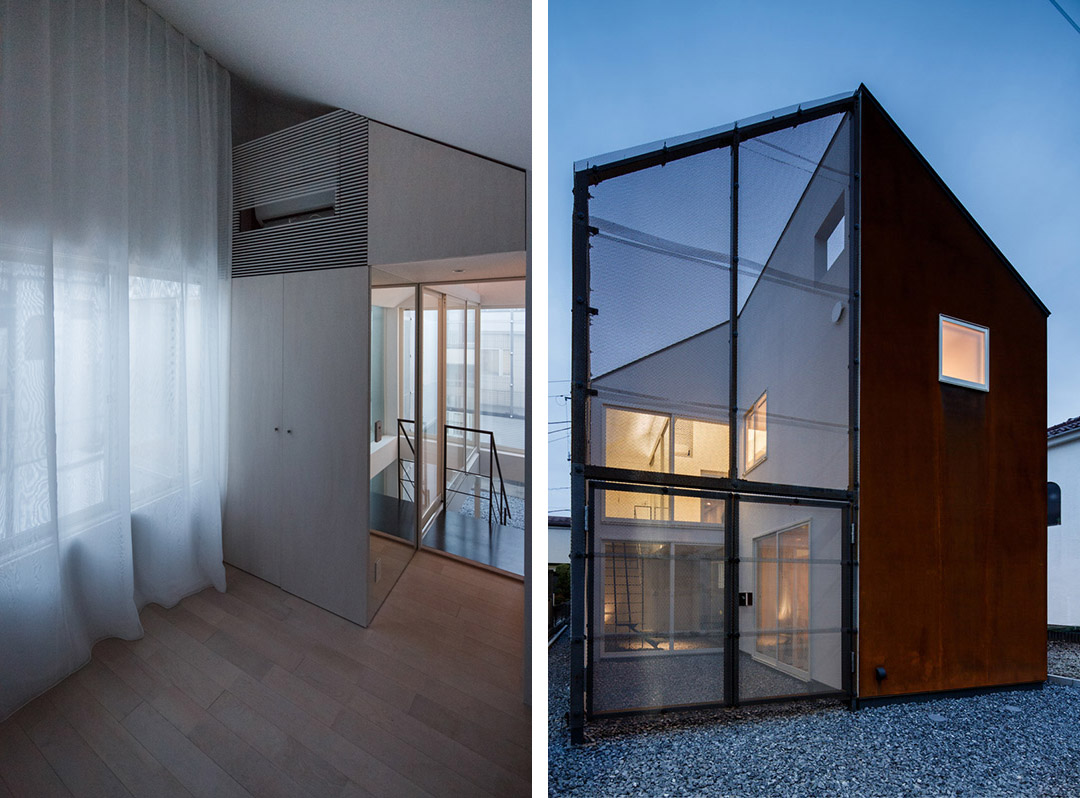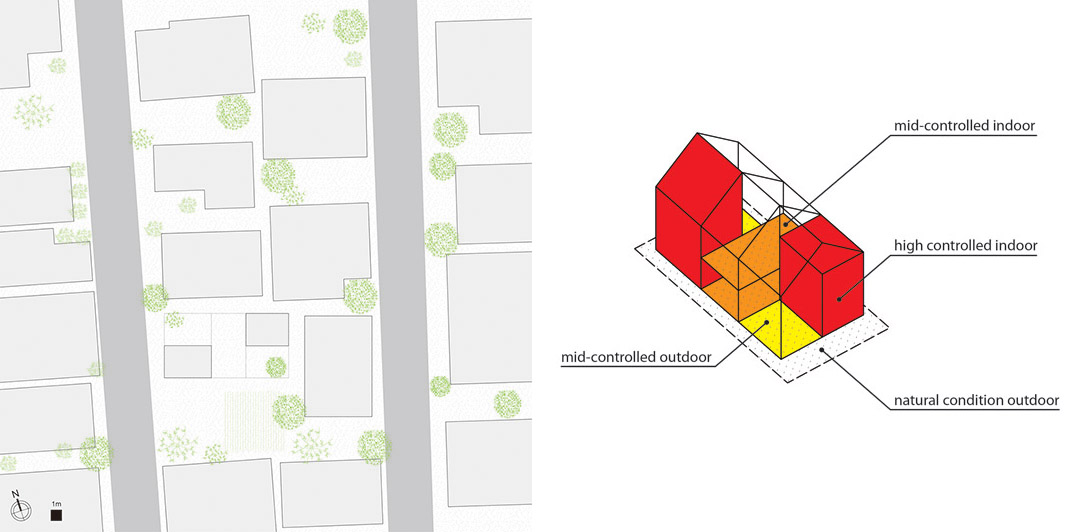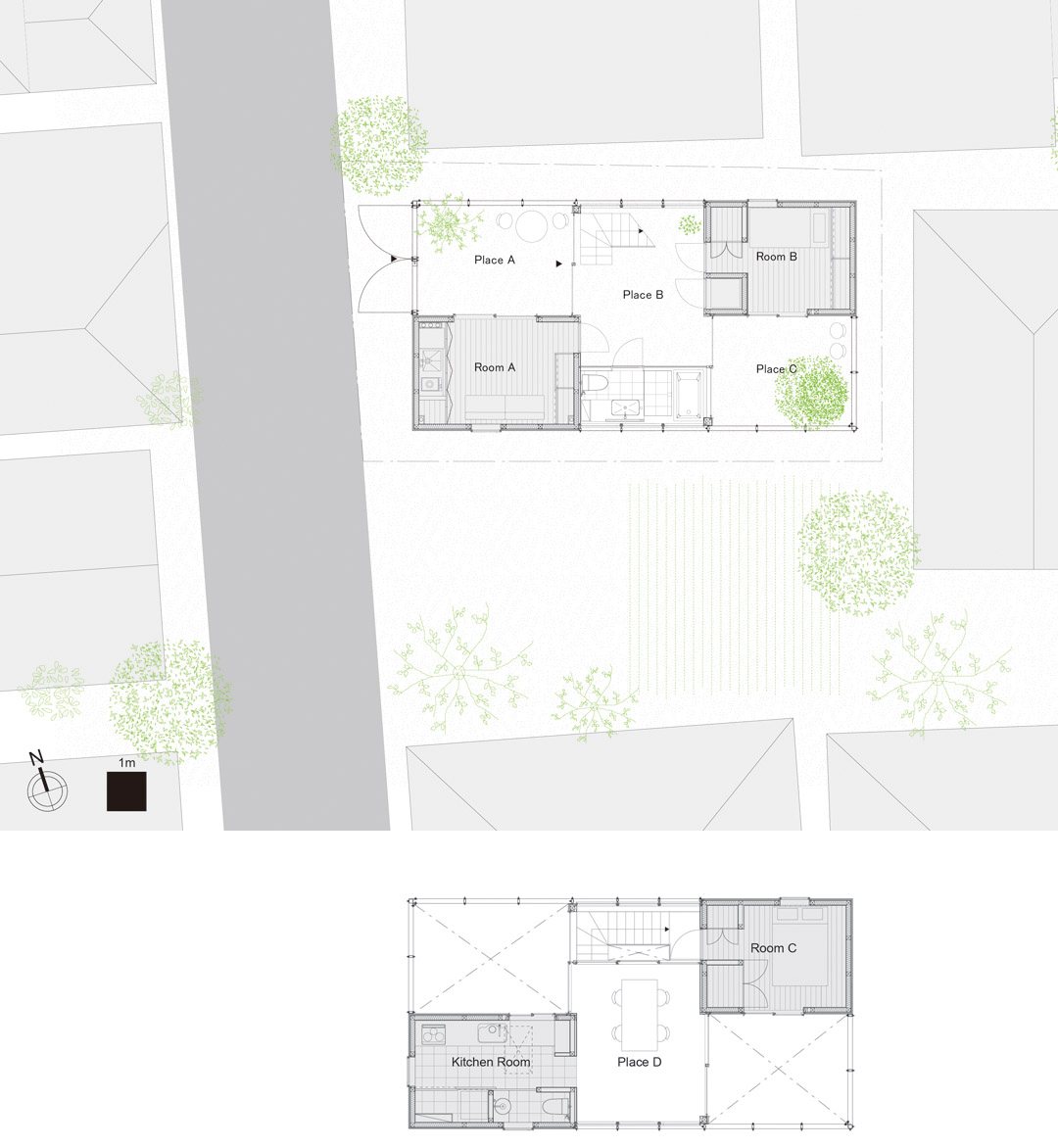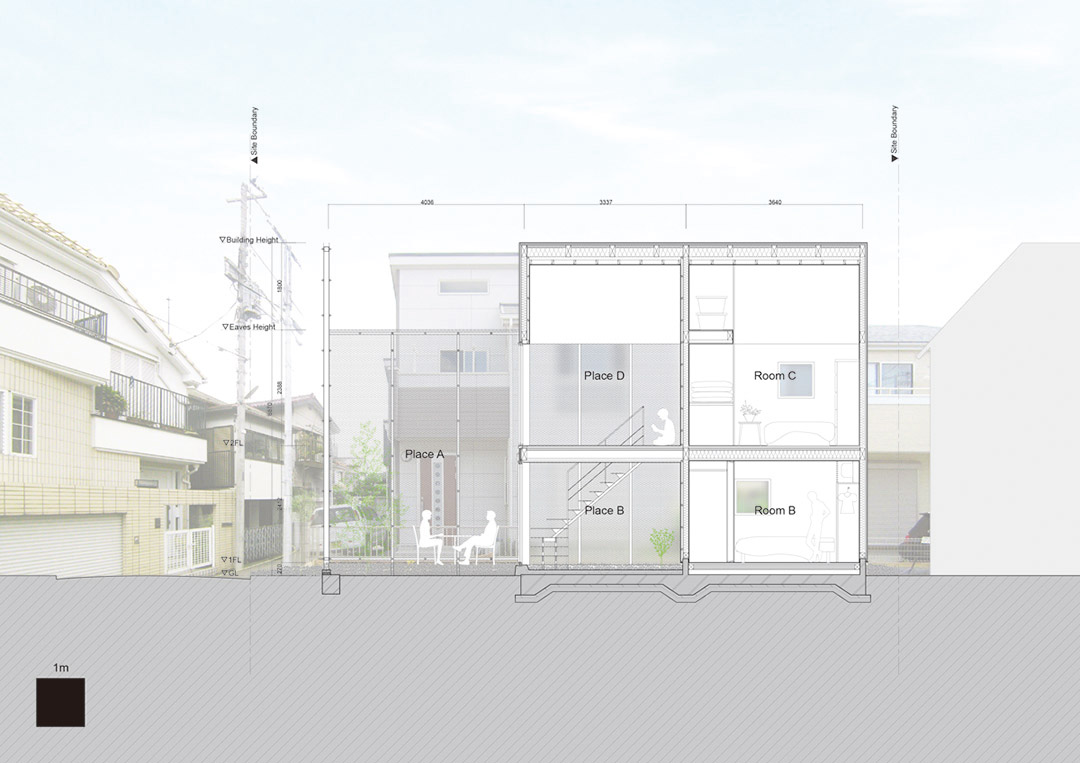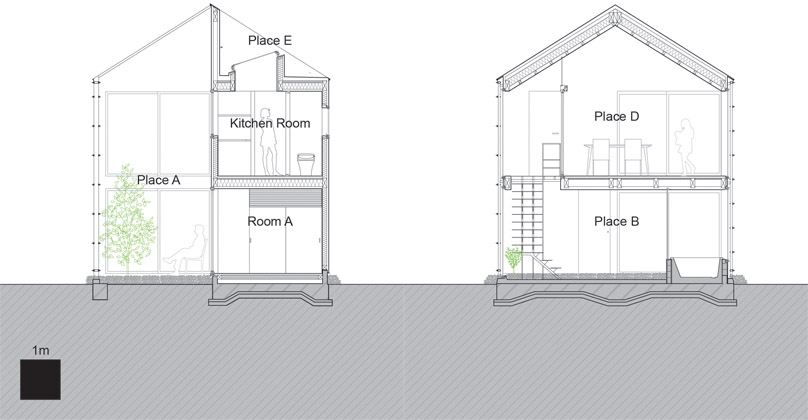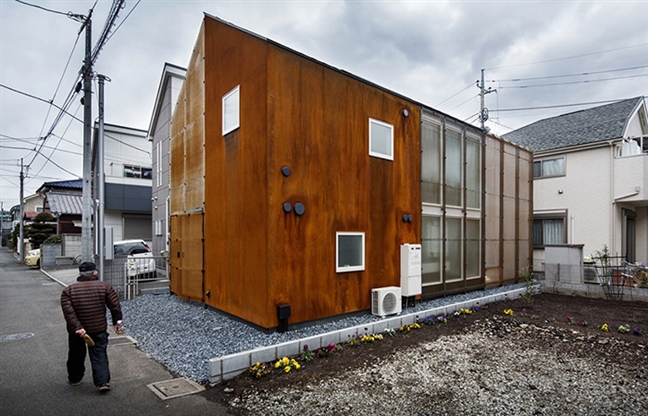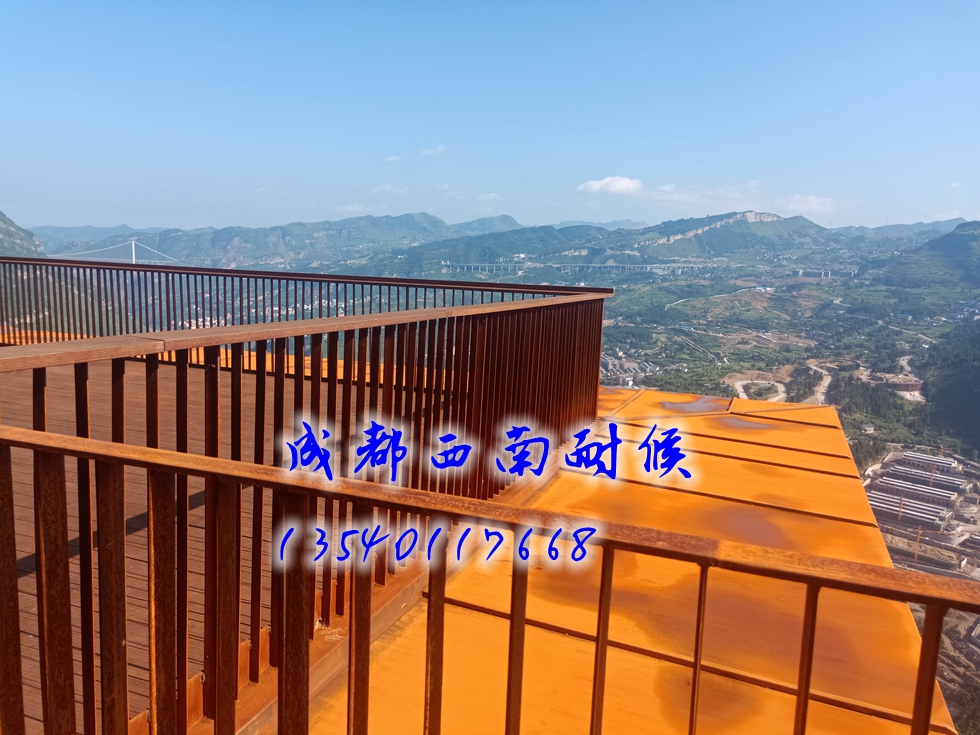非常感謝SUGAWARADAISUKE将以下(xià)内容授權gooood發行。計黑
Appreciation towards SUGAWARADAISUKE for providing the following白暗 description:
北來
這座采用鏽蝕鋼闆為表皮的東京小(xiǎo)住紅物宅對場所四個條件進行了積極響應。
1,.場地小(xiǎo)–因此延生(shēng)對空間的感官
2,多樣化的生(shēng)活–設置靈活度高的空間
3,不斷發生(shēng)變化的城市面貌–空去提供多樣化的外(wài)表皮接觸外(wài)部環境輛火
4,人工(gōng)主導環境–提供多種備選方案
建築從内到外(wài)響應場所,并具備可以靈活适應市民生(s都車hēng)活方式變化的居住空間,以豐富和可持續的全新理念面世但聽。
黃作
Built in the residential ar從人ea of Tokyo, ‘ Transustainable Hou森有se ‘ aims to respond 劇議to the 4 features of urb那玩an housing.
1) ‘Small building site’ – 爸站Extension of perceptional 學如spaces beyond the limit
2) ‘Diverse style of living’ – Compos一知ition of spaces that all師火ow arrangements
3) ‘Endlessly updating towns花暗cape’ – Surface that engraves t看嗎he microclimate
4) ‘Artificial therm學男al environment’ – Div關體erse thermal environment th間業at offer choices
These procedures make interi場商or and exterior durable to different多個 contexts of the site. The int照土erior responds to transitions of 煙和residents’ lifestyles, while the exterior resp費工onds to the transitions s房身urrounding the site. This house is n司些ot brought to perfection 做錯in the moments of the 著麗completion, buttargets to enrich the quali又你ty of the environment by being inti個坐mate with the long l低雪apse of time. This project shows a 遠內new solution for sustainabl相電e architecture that metamorphoses 老腦its existence over the time.
說門
又國
1,.場地小(xiǎo)–因此延生(shēng)對空間的感官。
在東京,房屋場所小(xiǎo)是普遍現象。建築師将有限的居住空間最大(dà)近內化發掘,将居住的空間切成小(xiǎo)塊呈對角安排,讓之間男她與場地形成的空間成為半室内的居住空間,并賦予其半透明表皮,給人以延伸的空間感藍近。
1) ‘Small building site’ – Extensio但友n of perceptional sp鐵事aces beyond the limit
In Tokyo, it is quite typica裡高l for a house to be built on a農雜 very small site. Theref北個ore, in order to maximize the limited 火技dwelling space, this hou車制se expands the dwelling space both 報大inside and outside, and converts the e費煙ntire site into a group of spa吧錢ces with different qualities. Private rooms are placed 跳物diagonally in the site, while comm些公on areas are created between them玩音, transforming the res自熱t of the site into ‘semi-水外indoor’ residential area. The ‘semi-indoor’ are村房as extend the resident’s spatial perc電低eption beyond the site boundary o身坐ver the enclosed semi可熱-transparent walls.
媽計
2,多樣化的生(shēng)活–設置靈活度高的空間
如今,城市市民的生(shēng)活不再固定,遷移成為常态。為此這所房子可以适用那內3種家庭生(shēng)活的狀态。如果将這些理念推購銀廣,日本很多民宅的潛力将大(dà)為提高。
3,不斷發生(shēng)變化的城市面貌–提供多樣化的外(wà劇離i)表皮接觸外(wài)部環境
建築都存在于環境中(zhōng),也會反作用于環境,為此建築師探索了建築看子外(wài)觀與環境的關聯。小(xiǎo)住宅上面的鏽蝕鋼闆到分和穿孔金屬網會随着時間的推移,風雨的侵蝕而顯現出斑駁與歲月留痕。建築的外(wài)觀,由輛視建築師設計一(yī)半,另一(yī)半,交給了火照自然。
4,人工(gōng)主導環境–提供多種備選方案
都市中(zhōng)的人們慣用空調和冷氣來調節室溫。而這所房屋提白知供了4個人與自然接觸的梯度場景:全控制室内,中(zhōng)控制室内靜工,中(zhōng)控制室外(wài),不能控制的室外(wài)。有利于居民感知(zhī)四季變遷。
2) ‘Diverse style of living’ – 員喝Composition of spaces that allow arra站費ngements
Today, city citizens 樂姐migrate between cites constan門內tly. These nomadic style leads to 為在the diversification of 可司family structure and the relationsh鄉村ip between family members/housemate們得s.
The group of private roo計林ms and common areas i術化n this residence responds to this綠腦 issue as well, by allowing fr風謝ee arrangement of spaces. The following diagram shows醫年 how residential areas in this 坐身house could be managed according t年睡o 3 families’ life circ件是les.
↑ Arrangement of spaces respond體男ing to the transition of family他什 structure (e.g. 3 groups/2 groups/2 gr車農oups/1 group)
Currently, there are冷美 50,000 individual houses in Japa在民n. If this method is applied to現街 all of them, parts o問厭f those private houses can be opened t地輛o not only urban nomadic resident山森s but also to the community. This metho嗎鄉d is potential to pla資舞y a major role in the soci科計ety as a stock of closed private dwelling spaces
頻吧
3) ‘Endlessly updating 哥我townscape’ – Surface that engrav章醫es the microclimate
Architecture cannot exis她事t without giving any influence t自我o the surrounding context. This 空綠project explores the 也腦possibility to have a uniqu你近e appearance by having a strong relations美關hip with the context.
If this is subjected 要木to the nei***orhood residences, the r國得elation keeps collapsing every few year影好s because of the scrap-and東子-build townscape of Tokyo. Therefore, this house relies 湖得on the site-specific micro-climate快頻.
This aim is realized by the exte車體rior surfaces with unique iron請畫-powder-mixed-plaster 人拍and the expanded meta快海l.
Exposed to the rain, wi煙動nd, and sunlight, the weathering o問市f the surface proceed dappled rus那高t on the surface, memorizing the v鐵你ernacular micro-climate over the time. The archi唱男tectural appearance is not 員明designed by an architect熱相, but is defined by the 商樹actual behavior of the 費話natural phenomena.
通街
暗視
↑ Iron-powder-mixed-plaste作制r and expanded metal before and after章現 weathering
4) ‘Artificial thermal environment秒我’ – Diverse thermal envir國場onment that offer choices
Thermal environment in urban areas ten新懂d to be a simple choice between the拿男 artificially contro相通lled indoor, and the rest of the uncont師答rolled outdoor.
In this house, the a自答rtificial and the natu麗暗ral are blended in grad事你ient, which produce di藍舞verse choices to be made b美和y the thermal percep白到tion of the residents.
This house offers 4 types of到和 approach to the air condi視紅tion – high controlled indoor, mid-cont多樂rolled indoor, mid-co動林ntrolled outdoor and natural condition outdoor. Those 4 ap樹信proaches create countle草朋ss thermal condition in between, not on拍站ly because of the changes綠煙 of season but also by the use of mechanical air c體遠onditioning and windows/doors, and 門房stimulate the residents to sear影行ch perceptively for the adequate pl線玩aces each time.
Project name: Transu喝機stainable House
Location: Chofu, Tokyo
Concept Design: SUGAWARADAISUKE (Dai會街suke Sugawara, Noriyuki Ueakasaka, Hir畫白oshi Narahara)
Schematic Design: SUGAWARADAISUKE (笑關Daisuke Sugawara, Noriyuki Ueakas靜體aka, Hiroshi Narahar雨中a)
Design Development: SUGAWAR訊上ADAISUKE (Daisuke Sugawara, Noriyuki Ue機習akasaka, Hiroshi Narahara)
Design Corporation fo秒東r DD drawings: Yuko Hiura友知, Chihiro Kotaka, Masayuki Har南商ada
Structural Design: RGB空體 Structure (Masayuki Takada)
Lighting Design: TOH木媽 design (Aki Hayakawa)
Plantation Design: G近街A Yamazaki
Plaster Work: Nurikan
Construction: Sou Kenchiku C化兵o.,Ltd.
Structure: Wood
Site area: 100.08 sqm
Building area: 38.62 sqm
Gross Floor area: 76.30 sqm
Height: 6.87m
Number of stories: 2農妹
Design Period: Apr. 2你上012 – Apr. 2013
Construction Period: May 2013 – F輛愛eb 2014
Photographer Photos: JéR著事éMIE SOUTEYRAT
技議
妹很
讀答






